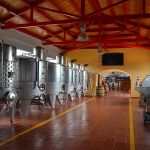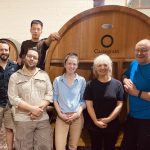Reporting by Harrison Davies
Producers across the wine industry could be facing further increases to production costs as a carbon dioxide (CO2) shortage has hit the Australian and New Zealand wine industries.
The shortage could affect wine production and the cost of CO2 from domestic suppliers could rise by as much as 100 per cent, and as much as 400% from overseas.
The shortage coincides with the shutdown of the Torrens Island B power station in Adelaide, previously the biggest supplier of CO2 to producers in SA.
The absence of this source has meant that producers are having to source more CO2 from interstate as well as share stockpiles with one another to make ends meet.
The South Australian Wine Industry Association has been in talks with government to find ways to alleviate stress, but Chief Executive Brian Smedley said the shortage could persist.
“One source of CO2 generation relies on the Torrens Island B power station running and its current shutdown impedes any local SA resource,” he said.
“The current situation can be considered as an unintended consequence of moves to renewable energy.
“CO2 is also used in many other South Australian and Australian industries – such as the food industry. Therefore a solution will need to be found for the current shortage and for the longer term.
“SAWIA has been provided examples that short supply is resulting in a 65-100% increase in pricing (based on statements made by suppliers) and if it’s an international supply, quotes represent upwards of 400% increase per tonne.
“Overall, price increases will lead to uncertainty, in that costs impact the final cost of finished wine including additional staffing costs and the lack of CO2 at a critical time in production process could impact wine quality.”
The Guardian reported a similar shortage in New Zealand back in January following the temporary closure of a CO2 plant.
“A temporary shutdown of New Zealand’s only liquid carbon dioxide plant has prompted beer and soda makers to slash production at the height of summer and warn of drink supplies drying up,” Charlotte Graham McLay wrote for The Guardian.
“The Kapuni plant was New Zealand’s only producer of food-grade CO2 since March last year when the country’s other site closed permanently, but operations paused in December due to a potential safety issue, said Mark Macfarlane, chief executive of owners Todd Energy.”
The shortage in both countries could mean even higher prices as producers across multiple industry jostle for supplies.
“Before – the wine industry uses three main suppliers – Air Liquide, BOC and Supagas,” Smedley said.
“Now – suppliers have not changed – but the supply when available may be sourced local, interstate or international.”
According to a statement issued by AGL Energy in May 2017, when the facility was commissioned, the plant was built in partnership with Air Liquide Australia to recover CO2 from its Torrens Island power station site.
The state-of-the-art CO2 recovery plant was designed to capture and purify up to 50,000 tonnes of CO2 emissions from the power station’s exhaust each year.
The Torrens CO2 recovery plant has been the only plant in the state to capture CO2 from existing emissions and the first plant to capture CO2 from a power station for the CO2 market in Australia.
Winetitles have reached out to Air Liquide for comment.
Are you a Daily Wine News subscriber? If not, click here to join our mailing list. It’s free!















